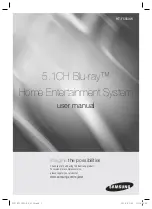
Solving Problems Described by LCD Status Messages
When a single message appears on the LCD, locate the code in
Table 2
-6
and perform the suggested corrective action. The code on the LCD can often specify
a very precise fault condition that is easily remedied. For example, if the code
E0280 MISSING VRM 2
appears, you know that a microprocessor is installed in
socket 2, but the VRM for that microprocessor is either improperly installed or missing.
In contrast, you might be able to determine the problem if multiple related errors occur. For example, if you receive a series of messages indicating multiple
voltage faults, you might deduce that the problem is a failing power supply.
Removing LCD Status Messages
For faults associated with sensors, such as temperature, voltage, fans, and so on, the LCD message is automatically removed when that sensor returns to a
normal state. For example, if temperature for a component goes out of range, the LCD will display the fault; when the temperature returns to the acceptable
range, the message is removed from the LCD display. For other faults, you must take some action to remove the message from the display:
l
Clear the SEL
—
You can perform this task remotely, but you will lose the event history for the system.
l
Chassis intrusion
—
When you remove the cover, the system assumes that you are servicing the bad component; the LCD clears when you replace the
cover.
l
Power cycle
—
Turn off the system and disconnect it from the electrical outlet; wait approximately 10 seconds, and then connect the power cable and
restart the system.
Any of these actions will remove fault messages and return the status indicators and LCD colors to the normal state. Messages will reappear under the
following conditions:
l
The sensor returns to a normal state but fails again, resulting in a new SEL entry.
l
The system is reset and new error events are detected.
l
A failure is recorded from another source that maps to the same LCD message.
System Messages
System messages appear on the console during POST to notify you of a possible problem with the system. If you are performing console redirection, system
messages will appear on the console.
Table 2
-7
lists the system messages that can occur and the probable cause and corrective action for each message.
board.
E13F8
HOST BUS
Faulty or improperly installed I/O board or
microprocessor board.
See "
Troubleshooting the I/O Board
" and "
Troubleshooting the Microprocessor
Board
" in "Troubleshooting Your System."
E13F8
HOST TO PCI
BUS
E13F8
MEM CONTROLLER
Faulty or improperly installed memory riser card
or microprocessor board.
Ensure that the memory riser cards are properly installed. If the problem
persists, replace the memory riser cards (see "
Memory Riser Cards
" in
"Installing System Options"). If the problem persists, see "
Troubleshooting the
Microprocessor Board
" in "Troubleshooting Your System."
E1580
MISSING MEM
n
Specified memory riser card is faulty or
improperly installed.
Ensure that the memory riser cards are properly installed. If the problem
persists, replace the memory riser cards (see "
Memory Riser Cards
" in
"Installing System Options").
E1580
POWER CONTROL
Faulty power supply distribution board.
Replace the power supply distribution board (see "
Getting Help
").
E20F1
OS HANG
Operating system watchdog timer timed out.
Restart your system. If the problem persists, see your operating system
documentation.
EFFF0
ESM ERROR
ESM firmware failure; faulty I/O riser card.
See "
Troubleshooting the I/O Riser Card
" in "Troubleshooting Your System."
EFFF1
POST ERROR
BIOS error.
Update the BIOS firmware (see "
Getting Help
").
EFFF2
BP ERROR
Faulty or improperly installed backplane board;
loose or improperly connected backplane board
cables.
Ensure that the interface cables are securely connected to the backplane board
(see "
Installing Drives
"). If the problem persists, see "
Getting Help
."
EFFF3
DRAC ERROR
Faulty or improperly installed remote access
card.
Ensure that the remote access card is properly installed. If the problem
persists, replace the remote access card (see "
Removing an Expansion Card
" in
"Installing System Options").
NOTE:
For the full name of an abbreviation or acronym used in this table, see "
Abbreviations and Acronyms
."
NOTE:
If you receive a system message that is not listed in
Table 2
-7
, check the documentation for the application program that is running when the
message appears or the operating system's documentation for an explanation of the message and recommended action.
NOTE:
Before you perform any procedures described in
Table 2
-7
, see "
Before You Begin
" in "Troubleshooting Your System."
Table 2-7. System Messages
Message
Causes
Corrective Actions
Address mark not found
Faulty diskette/CD drive subsystem or
hard-drive subsystem; faulty
peripheral riser card.
See "
Troubleshooting the Diskette Drive
," "
Troubleshooting a CD
Drive
," and "
Troubleshooting Hard Drives
" in "Troubleshooting Your
System."
Alert! Redundant memory disabled!
Memory configuration does not support
redundant memory
Alert! Unsupported memory or incomplete
Memory modules installed are not the
same type and size in all banks; faulty
memory module(s).
Ensure that all banks contain memory modules of the same type and
size and that they are properly installed. If the problem persists, see
"
Troubleshooting System Memory
" in "Troubleshooting Your System."
















































